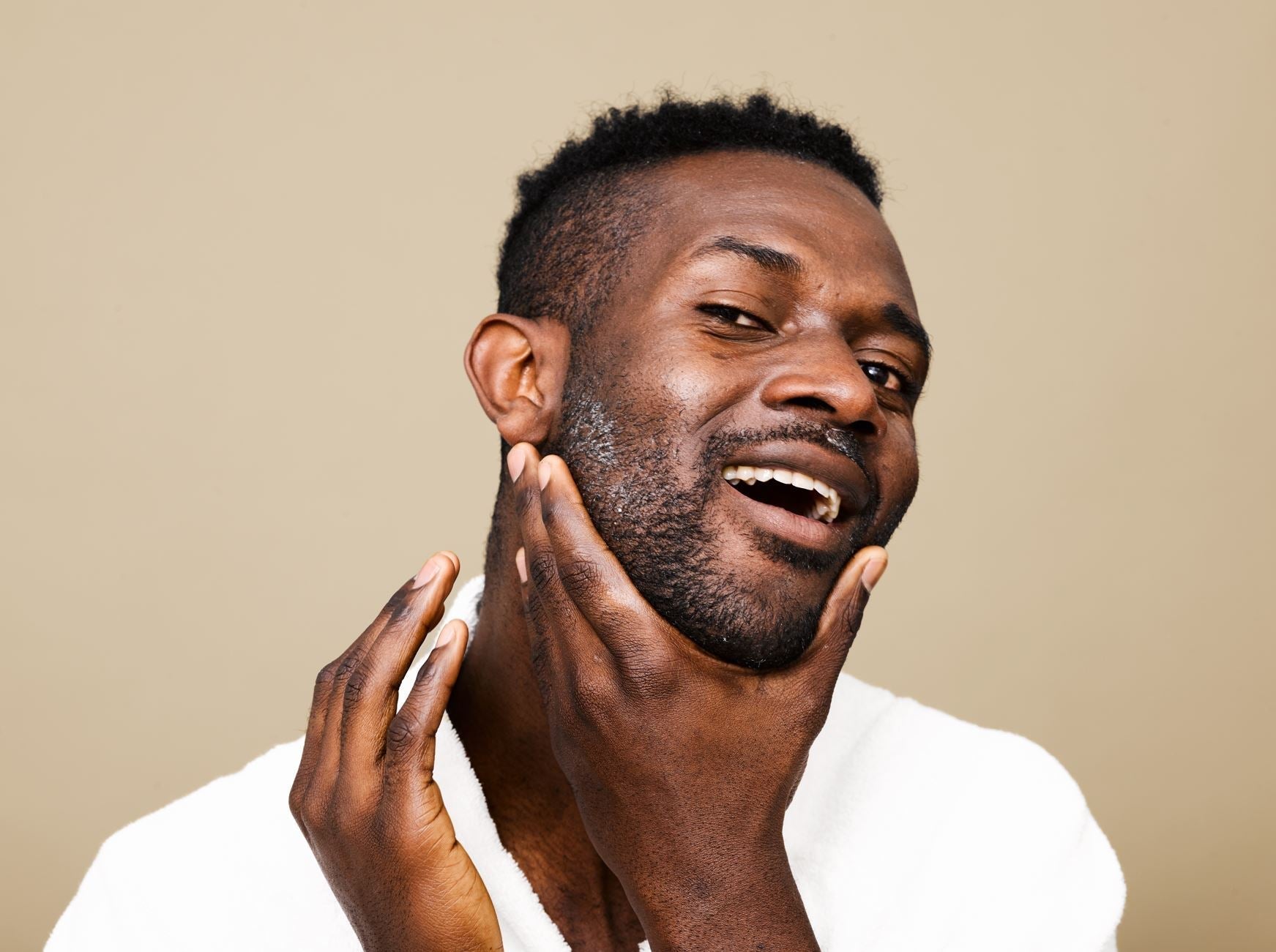
Skincare for Baby Boomers: Looking and Feeling Your Best After 60
If you’re a Baby Boomer, chances are you’ve already figured out a lot of things: how to balance career and family, when to say no, and maybe even how to set up your WiFi on the first try.
But skincare? That might still feel like uncharted territory.
The truth is, taking care of your skin past 60 doesn’t have to be complicated or expensive — but it does have to be intentional. Whether you’re starting fresh or dialing in a routine that works for aging skin, here’s everything you need to know to keep your face looking sharp, healthy, and resilient for years to come.
Why Skincare Matters More Than Ever After 60
Let’s get this out of the way: skincare isn’t just about looking younger. It’s about keeping your skin healthy, strong, and comfortable.
As you age, your skin becomes thinner, drier, and more prone to damage — especially from sun, pollution, and lifestyle habits that have built up over the decades. It also becomes less efficient at healing and regenerating itself.
That means:
-
Wrinkles become deeper
-
Dark spots become more noticeable
-
Skin becomes more reactive to harsh products
-
Healing takes longer
A simple, thoughtful skincare routine helps prevent all that. And bonus: when your skin feels good, you feel good too.
The Risks of Not Taking Care of Your Skin
Skipping skincare might feel like the easy route — but there are some real consequences over time:
-
Increased skin cancer risk (especially from past sun exposure)
-
Severe dryness and cracking
-
Chronic redness and irritation
-
Deep lines and sagging that could’ve been slowed with consistent hydration and SPF
-
Uneven skin tone from sun damage and inflammation
-
Slower wound healing
Bottom line: you can’t stop time, but you can make sure your skin keeps up with you.
How to Build a Skincare Routine That Works for Boomers
You don’t need a 10-step routine. You just need a few quality products used consistently.
1. Cleanse (but don’t overdo it)
Use a gentle, non-drying cleanser once or twice a day. Avoid anything with sulfates or alcohol that can strip your natural oils.
Look for:
-
Ceramides
-
Glycerin
-
Aloe
2. Exfoliate (1–2x a week)
Help slough off dead skin to reveal fresher skin underneath. Choose a gentle chemical exfoliant like AHAs (glycolic or lactic acid) — these are more forgiving than physical scrubs.
3. Moisturize
Hydration is everything as you get older. Look for a thicker, nourishing cream for night and a lighter one with SPF for daytime.
Ingredients to love:
-
Hyaluronic acid
-
Peptides
-
Squalane
-
Niacinamide
4. SPF, always
Even if you’re mostly indoors. Even if it’s cloudy. UVA rays — the ones that cause aging — are present year-round.
Look for SPF 30 or higher, broad-spectrum. Bonus if it’s included in your moisturizer.
The Sunscreen Wake-Up Call: Why It’s Non-Negotiable
Let’s be honest — if you’re a Baby Boomer, you probably spent your fair share of summers outdoors, maybe slathered in baby oil instead of SPF. Back then, no one really talked about sun damage. Now? We know better — and some of us are paying for it.
You’ve probably seen friends get diagnosed with basal cell carcinoma, melanoma, or precancerous lesions. It’s scary — and in most cases, it’s preventable.
Here’s what to know:
-
90% of visible aging is caused by the sun — not time, not genetics.
-
UVA rays (the aging kind) are present year-round, rain or shine.
-
Sun damage is cumulative — every unprotected walk, drive, or round of golf adds up.
-
Sunscreen doesn’t just prevent cancer, it prevents wrinkles, dark spots, and loss of firmness.
What to use:
-
Look for broad-spectrum SPF 30 or higher
-
Choose one that’s lightweight and non-greasy, so you’ll actually want to wear it
-
Apply it every morning, even if you’re just running errands
-
Reapply if you're spending extended time outdoors
If you’re already using something like Jaxon Lane Rain or Shine, you’re on the right track — it’s one of those rare SPFs that feels good on your skin and doesn’t leave a white cast.

Because yes — skin cancer is real. And so is the regret when you realize how avoidable it was. If sunscreen can help you dodge that bullet, applying it every day is the easiest win of your skincare life.
Ingredients That Help (and Ones to Avoid)
Power Ingredients to Look For:
-
Retinol (Vitamin A): Boosts collagen and cell turnover
-
Vitamin C: Brightens and protects from environmental damage
-
Peptides: Encourage firmer, plumper skin
-
Niacinamide: Strengthens your skin barrier and calms inflammation
-
Hyaluronic Acid: Hydrates like a champ without feeling greasy
Ingredients to Avoid (Especially for Mature Skin):
-
Fragrance: Can cause irritation or dryness
-
Denatured Alcohol: Often shows up in toners and dries skin out
-
Harsh scrubs: These can cause micro-tears and damage already-thin skin
-
Essential oils: Not always bad, but many are sensitizing with age
The Tech Side: At-Home Anti-Aging Devices
Alright, let's talk tech and the knife – but in a way that doesn't sound like your grandpa just discovered the internet. So, you're already on top of the creams and serums, good on ya. But what about those gadgets and, well, the more permanent solutions? Let's break it down:
The Tech Side:
Stepping Up Your Game with At-Home Devices Okay, so skincare isn't just about what you slather on anymore. There's a whole world of at-home tech that promises to give your anti-aging efforts a boost. Think of it as upgrading your skincare toolkit.
-
Red Light Therapy (LED): This involves using specific wavelengths of light, often red or near-infrared, that are said to stimulate collagen production, dial down inflammation, and get your circulation going. The key here is consistency – you gotta stick with it for gradual results. And yeah, make sure you're looking at reputable, FDA-cleared devices so you know you're getting something legit.
-
Microcurrent: This one's a bit more… electric. It uses low-level currents to gently stimulate your facial muscles, aiming for a temporary lift and a bit more tone. Again, daily or near-daily use is the name of the game if you want to see any real difference.
There are also other options floating around, like Radiofrequency (RF) and at-home microneedling. Just a heads-up, these can be a bit more involved, so definitely do your homework before diving in. These devices are generally seen as complements to your regular skincare routine, not replacements.
Now, if you're looking at things that offer more significant and lasting changes, well, that's when we start talking about…
The Big Guns: Considering Surgical and Invasive Options
Alright, let's get real. Sometimes, the creams and gadgets just aren't cutting it, or you're looking for more dramatic results. That's where surgical and minimally invasive procedures come into play. These are the options that can offer more noticeable changes, though they come with their own set of considerations.
Surgical:
-
Facelift (Rhytidectomy): This is the classic for a reason. It involves surgically lifting and tightening the skin on your face and neck, addressing sagging and deeper wrinkles. It delivers significant results but involves a recovery period and a higher cost.
-
Eyelid Surgery (Blepharoplasty): Specifically targets those tired-looking or baggy eyelids, making a real difference around the eyes.
-
Forehead Lift (Browplasty): Smooths out deep forehead lines and raises sagging eyebrows for a more refreshed look.
-
Neck Lift (Platysmaplasty): Focuses on tightening that loose skin and those pesky jowls around the neck.
Minimally Invasive:
-
Injectable Neurotoxins (Botox): These work by temporarily relaxing the muscles that cause those expression lines – think frown lines and crow's feet. It's a popular and effective way to soften wrinkles.
-
Dermal Fillers: Injections that add volume to plump up wrinkles, smooth out folds, and restore lost facial contours.
-
Laser Skin Resurfacing: Uses lasers to improve skin texture and reduce wrinkles by removing outer layers or stimulating collagen production in deeper layers.
-
Chemical Peels: Apply chemical solutions to exfoliate the skin, revealing smoother, less wrinkled layers.
-
Microneedling (Professional): A controlled treatment where tiny needles create micro-injuries to stimulate collagen production. The professional versions are more intensive than at-home rollers.
-
Radiofrequency (Professional): More powerful, professionally administered RF treatments can tighten skin by heating the deeper tissues.
If you're even thinking about these more involved options, the absolute most important thing is to consult with a qualified and experienced dermatologist or plastic surgeon. They can assess your specific needs, explain the procedures in detail, discuss the costs and recovery, and outline any potential risks. Going this route is a big decision, so make sure you're fully informed and have realistic expectations.
Common Mistakes to Avoid
Let’s be real — the best skincare routine is one you’ll actually stick to. Here are the pitfalls to avoid:
-
Using harsh bar soap on your face
-
Skipping sunscreen (yes, even now)
-
Thinking it’s “too late” to start — it’s not
-
Using too many new products at once — keep it simple
-
Neglecting your neck and hands — they age too!
-
Ignoring hydration — inside and out
FAQs: Skincare for Baby Boomers
Q: Am I too old to start skincare now? A: Nope. Skin responds to care at any age. You'll see a difference in hydration, texture, and brightness even if you start at 65 or 70.
Q: Do I really need SPF if I’m not in the sun much? A: Yes. UV damage builds up over time — even from indirect sun, like through windows or on cloudy days.
Q: Should I use retinol? A: Yes, if your skin can tolerate it. Start slowly (2x a week) and use a gentle formula. It helps reduce fine lines and boosts collagen.
Q: What if I have super sensitive skin? A: Stick with fragrance-free products, avoid alcohol, and look for calming ingredients like aloe, oats, and niacinamide.
Q: I’m a man. Do I need to do as much skincare as a woman? A: 100%. Skincare isn’t gendered. Your skin deserves care. You need at a minimum the basics of good hygiene and sun protection: a mild cleanser, a good moisturizer, and daily SPF. From there, you can add on additional steps to take your skin to the next level, depending on how much of a youthful glow you want to achieve.
Final Thoughts: It’s Not About Vanity — It’s About Vitality
Taking care of your skin isn’t about chasing youth. It’s about showing up for yourself in a way that feels good, intentional, and confident.
You’ve earned this kind of care — and it doesn’t take much to look (and feel) a little more refreshed each day.
Start with the basics. Build from there. And if you need help figuring out what to use, we’re always here to make it simpler.
Because good skin isn’t just for 20-somethings. It’s for everyone who’s still getting up, showing up, and giving life their best shot — wrinkles and all.
Shop Baby Boomer Skincare
The Jaxon Lane Promise:
Our products are formulated with effective ingredients and designed to be easy to incorporate into your daily life. Consistency is key, so find a routine that works for you and stick with it. You might not stop time, but you can definitely help your skin age gracefully and feel damn good in the process





Rain or Shine SPF 50 Sunscreen:


